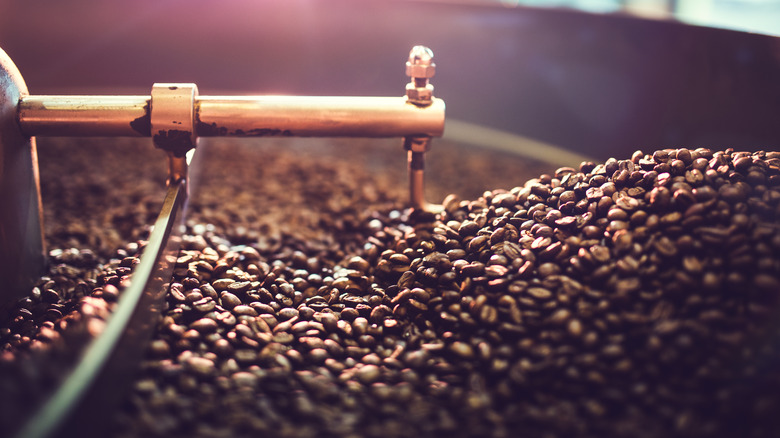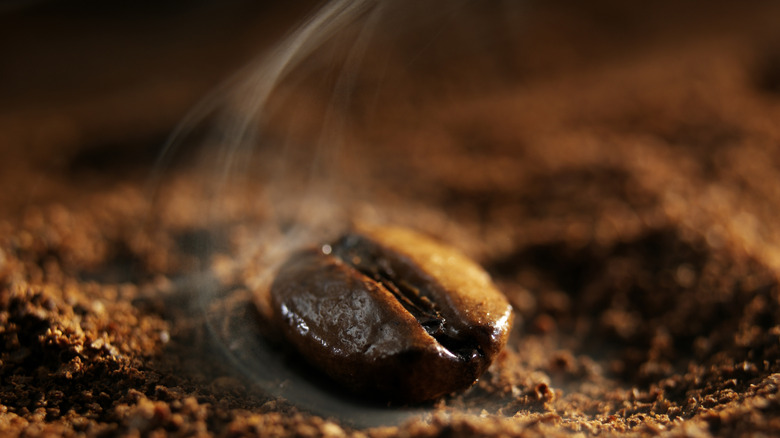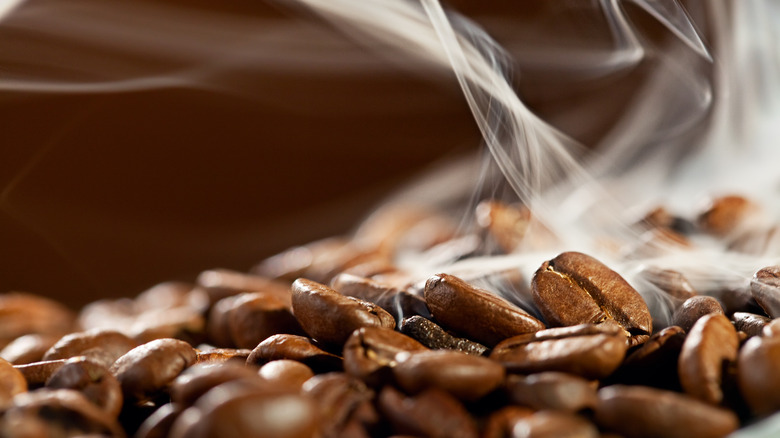Why You Don't Want Your Coffee To Be Too Fresh
Every bag of pre-roasted coffee comes with a roast date. It seems inconsequential, but this tiny detail is actually a piece of critical information for coffee lovers. Besides acting as a best-by marker, as you'd find on any other food item, it also tells you how long you should wait before brewing up the beans. Typically, you should use coffee beans within 7 to 21 days after roasting for maximum freshness and flavor.
Yes, you read that right: You can't just brew the coffee beans immediately, especially if they're fresh out of the roaster. As strange as it may sound, coffee beans that are too fresh are not a good thing. You need to give the beans some time to rest after roasting so that they can fully release their flavors and aromas. This waiting period is crucial to stave off a phenomenon called off-gassing; which, if you're not careful, can totally ruin your brew — even if you bought the most expensive and premium Congo coffee beans.
It's best to wait at least three days before making filtered coffee with your beans. If you're making espresso, wait a week and you'll get top-notch flavor. Ideally, though, give your coffee more than seven days to rest — that's when the flavors peak!
What is off-gassing?
Off-gassing, also known as de-gassing, occurs during the coffee bean roasting process. When raw beans are subjected to high heat in a roaster, the complex carbohydrates they contain break down. This transformation not only alters the beans' flavor — from raw and grassy, to the rich and aromatic qualities we associate with roasted coffee — but it also produces a lot of carbon dioxide gas, or CO2. Immediately after roasting, the beans are brimming with CO2. The process releases a lot of it within 24 hours post-roasting. After this period, though, the flow of outgoing CO2 tapers out to steady, gradual emissions.
When you're brewing your coffee, you'll want as little CO2 as possible. Picture the CO2 trapped within the coffee grounds as barriers that hinder water absorption. This impedes the extraction of flavorful and aromatic oils — resulting in a bland, sour-tasting brew, even with a premium specialty coffee blend. This is the reason why you shouldn't brew the coffee right away (especially not during the intense off-gassing phase within the first 24 hours), or anywhere close to the roasting date.
Best cure for off-gassing: time
There's no quick fix for coffee that's too fresh, other than time. You have to let the beans naturally release the built-up CO2 first before you do anything else with it. It's simple — just let the beans sit on the counter in their bag for a day or two, or up to a week after the roasting date. The exact time depends on the roast type and your brewing method.
For dark roasts, you're good to go after resting them for one to five days, no matter the brewing method. Medium roasts are a bit trickier. For filter brewing, wait five to seven days. But for espresso, give it up to a week. Light roasts follow a similar pattern as medium roasts, but require even more time — 10 to 14 days for filtered coffees, and 14 days or more for that shot of espresso.
However, if you do decide to brew coffee that's just a couple days fresh, you should add an extra step to your routine called blooming, which enhances the coffee's flavor. This is especially true when using a pour-over or French press method. Lightly wet the coffee grounds with hot water for 30 to 45 seconds before brewing as usual. Blooming allows trapped CO2 within the grounds to escape, ensuring a consistent brew and a more even extraction.


